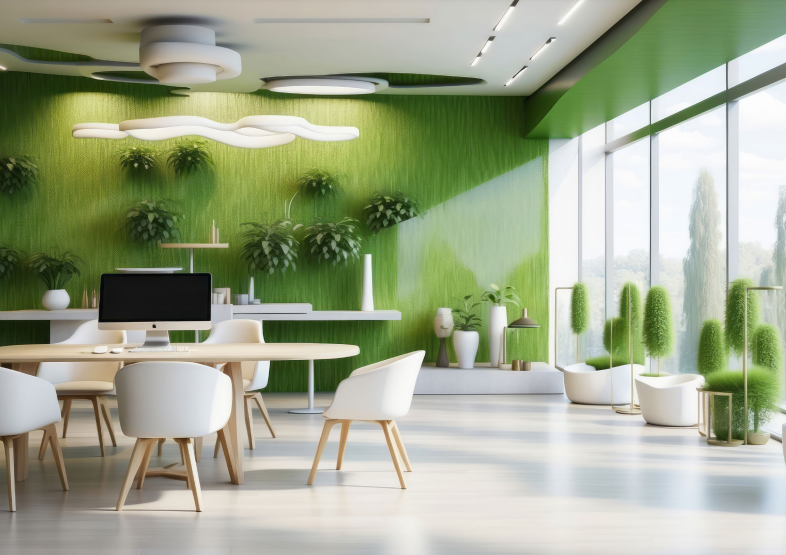We all had to “fall back” this past weekend (unless you’re one of the lucky ones in Hawaii), but we don’t need to fall back on our old lighting habits. With the end of Daylight Savings Time, comes the end of low electricity bills. Short days mean a long ways to go for your facility’s lighting.
 This concept is nothing new. Benjamin Franklin presciently grappled with the idea that day time = money in his essay “An Economical Project for Diminishing the Cost of Light.” As the face of the $100 bill, Ben Franklin knew how to be green and had money covered.
This concept is nothing new. Benjamin Franklin presciently grappled with the idea that day time = money in his essay “An Economical Project for Diminishing the Cost of Light.” As the face of the $100 bill, Ben Franklin knew how to be green and had money covered.
Today, roughly a third of your utility billing goes towards lighting. How can you conserve energy? Here are a few tips:
Lighten Up!
Use lighter colors on walls and ceilings to maximize the reflection and effect of light sources. Painted walls, along with fabrics and perforated metal, should be strategically placed to offset direct sunlight. Glare distracts site occupants and is the #1 obstructor of daylighting systems.
Here Comes the Sun
Use a lighting system that compliments and supplements natural lighting for energy use cuts, increased worker productivity, and happy tenants. Make sure you are fully utilizing skylights, clerestory windows, conventional glazing, reflective materials, and light pipes.
LED It Shine
Daylight is the most efficient lighting, but after that there’s a variety of light sources each with varying levels of efficiency, color quality, and service life.
Light-Emitting Diodes, LEDs, are a newer light source that can save 50-90% in energy costs. Combined with a reflector upgrade or retrofit, the glare associated with LEDs and the number of fixtures required can be reduced. Tax credits and power company rebates are another advantage of LEDs over fluorescent lighting.
For those who are set on fluorescent, replace T12 lighting systems with energy-efficient T8 lighting and electronic ballasts.
For security and parking lot lighting, high pressure sodium fixtures have the advantage over metal halide, mercury vapor, fluorescent, and incandescent fixtures.
Gain Control
Use lighting controls to adjust electric lights at appropriate times. Use automatic controls that sense ambient daylight to ensure that electric lighting is minimized during strong daylight.
Dimmer switches in stairwells, copy rooms, restrooms, and perimeter lighting fixtures can trim energy use. For exterior lighting and some interior lighting, time clocks or photoelectric cells can be installed.
Are you seeing the light yet?
Read more on energy management through lighting improvements at Energy Star.
Want to learn more about the greening of existing buildings? Register for a free Webinar, LEED EBOM: 101!











